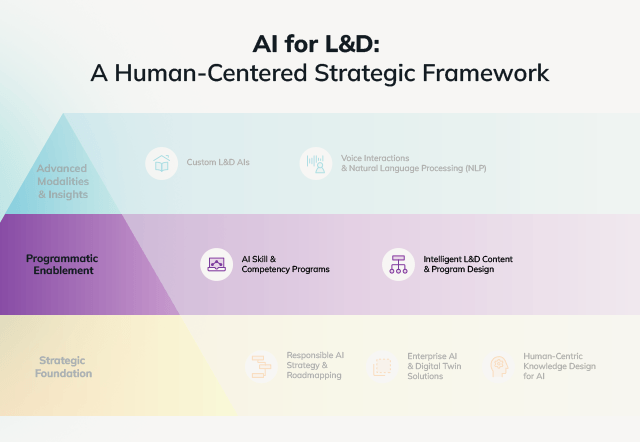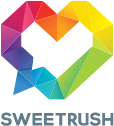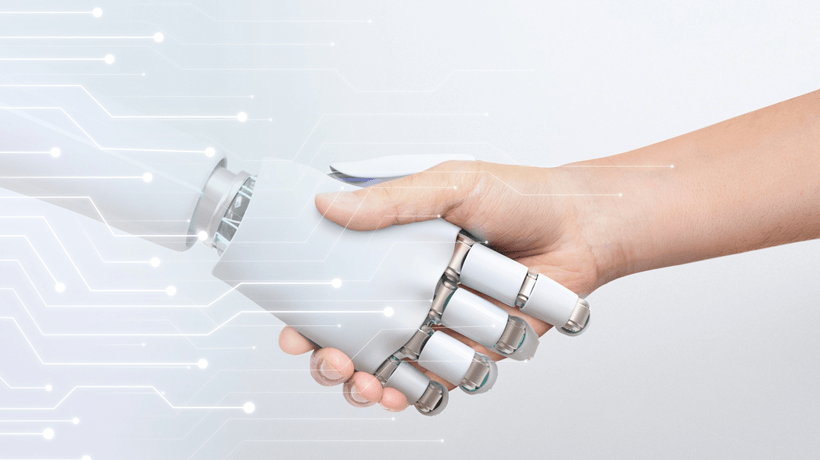AI Strategy: Building On Our Foundation
We've talked about creating an AI strategy—the ground floor, or Strategic Foundation, of our AI pyramid (below).
Once the Strategic Foundation is in place, it's time to level up and translate it into actionable capabilities across the workforce. These comprise the middle section of the pyramid: the Programmatic Enablement stage.
We'll get to the peak of the pyramid, or the Advanced Modalities & Insights stage, in the next article.

(Want an overview of all three levels of the pyramid? Check out the first article in the series, "AI Adoption: A Tale Of Three Organizations—And The L&D Leader's Opportunity.")
Your Foundational AI Strategy In Action
To avoid a chaotic, ad hoc and, above all, risky AI implementation, all of your people need to be onboarded to your AI strategy and vetted collection of AI tools.
It's also great for your people: Research shows that folks who understand AI are more likely to engage with AI tools and less likely to view AI with fear or mistrust. And given the 82% of leaders planning to expand the capacity of their workforce with digital labor, there's no time like the present.
Sharing your AI strategy, guardrails, and policies—along with the WIIFMs of increased efficiency and productivity—with your people helps them understand AI and approach it as a long-term partner.
Naturally, L&D leaders and teams are motivated by those same WIIFMS: Lack of time is our top obstacle in creating new content; meanwhile, the demand for custom learning is only ramping up.
We'll explore how you can partner with AI to expedite the production of L&D and programs; curate content and internal wisdom and recommend personalized learning paths; help your team scale high-value learning experiences to your entire learner audience—all the while tracking progress, business impact, and ROI.
In this article, we'll focus on two actionable capabilities (and benefits) of programmatic enablement:
AI Skill And Competency Programs
Why is workforce AI skilling so important? The numbers paint a vivid picture of the need:
- 76% of working professionals say they need AI skills to remain competitive in the job market.
- 57% reported feeling some or a great deal of impact from AI on their jobs, with overall experiences skewing positive.
- 56% report that they do not feel prepared to use AI at work.
- 55% reported that their employer provides no clear guidance on the use of AI tools.
- 41% feel they have a good understanding of AI.
- Over one-third (35%) are using AI at work, but only 31% report having received workplace AI training.
- A mere 16% of respondents reported that they had access to employer- or school-provided AI tools.
As the data demonstrate, frequent AI usage among team members does not equal organizational or individual AI readiness.
Without structured, practical training and clear guidance on usage, AI adoption risks being superficial, spotty, and incredibly risky (Learn more about the risk in Scenarios 2 and 3 in our companion article, "AI Adoption: A Tale Of Three Organizations—And The L&D Leader's Opportunity.")
Real AI capability involves shifting how people think, act, and integrate AI into their daily workflows. It's about achieving genuine, lasting behavioral change and tool mastery, ensuring that team members don't just understand AI, but embody responsible and effective AI use.
AI Training Pathways
Every organization's AI skill needs are unique. In general, though, training pathways tend to fall into three themes.
The AI Fundamentals and Responsible Innovation pathway addresses the foundational understanding of AI, including:
- Defining and embodying your unique AI principles
- Fostering psychological safety
- Mitigating bias
- Managing data securely and responsibly
- Ensuring copyright traceability
The Practical AI for Enhanced Productivity pathway focuses on immediate, tangible skills to equip your team members to use AI for daily tasks. This pathway leverages insights from your custom knowledge bases that reflect nuanced institutional knowledge & wisdom—so that this valuable source of human expertise doesn't get lost in your digital transformation. Skills include:
- Using vetted AI tools and platforms
- Prompt engineering
- Human-AI collaboration
Finally, the Strategic AI Integration and Transformation pathway is designed for organizational leaders and internal change agents. This path aims at forging a cohesive, strategic AI roadmap across the organization to transform operations and culture and ensure initiatives are strategically aligned, continually calibrated, and evaluated to achieve measurable impact. This pathway delves into:
- Ongoing research and development of new AI initiatives, projects, and tools
- AI project management
- Integrating AI into specific industry contexts
- Mastering change management for AI adoption
As we see in all three pathways, building AI capability involves far more than just tool training. Each is built upon the values-driven AI principles we established together in the AI strategy mapping phase and the mental model shifts we identified. (For more about the strategy mapping phase, including values-driven AI principles and mental model shifts, see this article.)
AI Skill And Competency Programs: Building Upon The Foundational AI Strategy
Here's a quick recap of how we work with you to create these fundamental building blocks for your AI skilling program:
We begin by gathering information through internal communication channels, qualitative analyses, and empathy interviews with your people to co-create unique AI principles specific to your culture—such as "continuous improvement" or "ethical use and deployment." These principles address common AI fears and provide a North Star for your teams.
They also form the foundation for defining mental model shifts (MMS), or the critical attitudes and behavioral changes your AI training program needs to foster to build a truly cohesive AI culture.
For example, your goal might be to shift your people's mindset from "It's OK to experiment with AI without boundaries," to "It's great to experiment with AI, but I need to follow my organization's AI guidelines, policies, and best practices to make sure I'm using AI safely, ethically, and effectively."
By aligning your programs to these custom MMS, we ensure that your program drives sustained behavioral change among your people and builds the desired AI competencies in every area of your organization.
(Curious about how an AI skill and competency program looks in action? Check out three real-life case studies in our eBook, The AI Blueprint: Actionable Strategies For L&D Leaders To Reduce Risk, Add Value, And Unlock The Benefits Of AI At Scale.)
Intelligent L&D Content And Program Design
Thanks to the flux in the global economy, skilling needs are evolving faster than ever…though most training budgets aren't keeping pace. As we're continually asked to do more, faster, with fewer resources, L&D leaders are under extraordinary pressure to produce.
With our traditional content creation workflows, it's challenging to keep pace with rapidly evolving learner needs and the demand for personalized, relevant materials.
AI offers a revolutionary opportunity here: It can accelerate development, potentially reducing labor, cutting costs, and speeding time-to-implementation for critical training initiatives.
With these promising benefits, it's tempting to rush into adoption. But embracing AI use in a vacuum can be ad hoc, inefficient, and incredibly risky.
To benefit our team, AI must be strategically integrated into our L&D ecosystem—it's not just another tool or shortcut. And as we work toward integration, it's critical that we maintain our high standards of accuracy, quality, and instructional soundness in every program we design.
Here's what that looks like in practice.
AI-Driven Learning Content Creation
AI can help learning teams answer the ever-increasing need for more learning programs and content while enhancing efficiency and reducing project timelines.
For example, SweetRush team members work with client-partners to use a combination of simple requests and special prompts to guide the AI and generate high-quality content tailored to each client-partner's needs, as well as its brand and voice.
We then conduct a rigorous internal review to ensure that all AI-generated content meets our quality standards and aligns with the learning objectives we've defined together at the beginning of the project.
Then, we integrate the refined, AI-generated content into a polished final product ready to roll out to learners.
This process allows us to create engaging and effective learning experiences more efficiently, while also maintaining a human-centered approach. All of the human interactions that occur at strategic points throughout the process are must-haves and cannot be skipped for any reason.
AI-Supported Avatar Creation
Digital avatars are much more than mere non-player characters: They help us personalize our learning solutions; they deepen learners' emotional connection to the material; and they can even converse with learners in realistic, natural-sounding interactions.
Avatars fall into two categories:
Pre-rendered: These avatars are created in advance for use in videos and other recorded or static content. Because they don't need to load in real time, pre-rendered avatars can be more photorealistic. Though less interactive than live avatars, they can be great choices for programs delivered via eLearning module or video.
Live: Live avatars process in real time, which requires more intensive computing power. As a result, they're less photorealistic—but highly interactive. They can be great choices for virtual coaching, interpersonal skills simulations, and any learning experience that prioritizes hands-on, in-the-moment practice.
Your choice will depend on your use case, project budget, and timeline.
Whether you need pre-rendered avatars, live avatars, or a combination, you can leverage several different design approaches, each involving a different level of AI involvement.
Avatar Design Approaches
![]()
Mostly AI-powered: For an internal program or informal use, AI tools can help you develop avatars that you can create quickly and leverage easily in a video or eLearning course. As with any generative AI output, you'll need to review and refine. Caveat: These avatars aren't super-customizable, but their simple shapes, colors, and styles can work well for an eLearning module or video.
Custom: Client work, and any program that requires high production values, calls for full control by a human artist from start to finish. In this process, a 3D artist (or team of artists) begins with a photo or sketch of the desired avatar and "sculpts" it in a 3D design program. Custom avatars can be used in any program—and are especially valuable in immersive learning experiences where nuance and realism are key.
Hybrid: The middle path uses AI to craft the initial avatar, with a human 3D artist then stepping in to fine-tune details and create the final version of the avatar. This approach can help your team fast-track custom-quality avatars while remaining sensitive to timelines and budgets.
Next Up: Peak AI
These exciting examples of AI training and L&D content creation are just a few ways to build on your foundational AI strategy and enhance efficiency, productivity, and a shared sense of responsibility across your organization. Level up to the next article to explore advanced modalities and insights at the peak of the AI pyramid.
Prefer to explore at your own pace? Download our eBook, The AI Blueprint: Actionable Strategies For L&D Leaders To Reduce Risk, Add Value, And Unlock The Benefits Of AI At Scale. You'll find a comprehensive plan to help you build your AI strategy from secure foundation to peak implementation.






![The AI Blueprint: Actionable Strategies For L&D Leaders [eBook Launch]](https://cdn.elearningindustry.com/wp-content/uploads/2025/09/The-AI-Blueprint-Actionable-Strategies-For-LD-Leaders-eBook-Launch.png)
